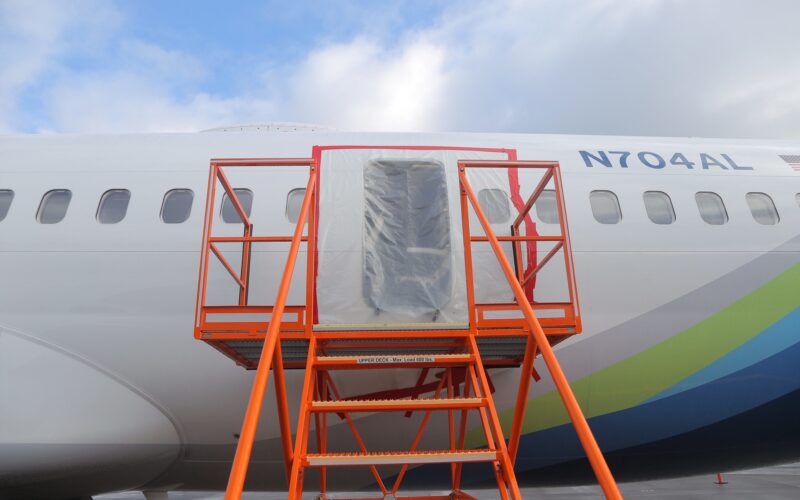A lawyer representing 22 people onboard the Alaska Airlines flight that suffered a rapid decompression on January 5, 2024, has alleged in a lawsuit that passengers previously flying on the same Boeing 737 MAX 9, registered N704AL, reported hearing a “whistling sound” coming from the “vicinity” of the door plug.
On February 7, 2024, Mark Lindquist, amended a previous lawsuit he filed alleging emotional and physical injuries to passengers, including severe stress, anxiety, trauma, and hearing damage, to include new accusations against both Alaska and Boeing.
“There was a whistling sound coming from the vicinity of the door plug on a previous flight of the subject plane,” the claim read. “Passengers apparently noticed the whistling sound and brought it to the attention of flight attendants who reportedly informed the pilot or first officer.”
According to a statement from Lindquist, no known further action was taken “after the pilot checked cockpit instruments, which purportedly read normal”.
Linquist also cited the cockpit door that flung open during the rapid cabin depressurization, a design feature that the Alaska pilots were unaware of.
“The resulting shock, noise, and communication difficulties contributed to a lack of proper communication between the flight crew and passengers, thereby intensifying confusion and stress,” according to the lawsuit.
Linquist claimed Boeing should have fixed their quality control issues following the two fatal 737-8 crashes in 2018 and 2019.
On February 6, 2024, the National Transportation Safety Board (NTSB) published its preliminary investigation report indicating four bolts to hold the mid-exit plug door in place were missing.
On January 5, 2024, Alaska Airlines flight 1282 took off from Portland International Airport (PIA), but as it approached 16,000 feet (about 5 kilometers), a plug door on the left-hand side of the fuselage separated from the aircraft.
“This plane was a ticking bomb,” Lindquist said. “A blowout could have happened at a cruising altitude where it would have been catastrophic.”
AeroTime has contacted Alaska Airlines and Boeing for comment.

